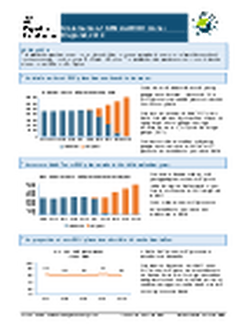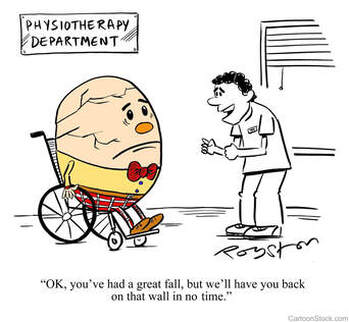|
I always seem to say in my last SEN update at this time of the (academic) year, that I cannot believe we are already nearly at the end of another (academic) year – and this year feels just the same. In this SEN Update, you will find sections entitled:
As I always say, I know how busy everyone is, so please feel free to read just the sections that are of interest to you or read everything; the choice is always yours. Don’t forget, to ensure that you never miss out on one, you can get my SEN updates personally by completing your email details below, or by following me on one of the Social Media platforms that I use, at the top of this page. You can also share this update with others (please only do so if it may be relevant to them) by using one of the icons usually to the right or at the bottom of this page. THE NUMBER JUST GETS LARGER EVERY YEAR(SEN STATS) If you have read my updates previously in the last few years, you will know that at this time every year, I like to share the latest annual statistics about Education, Health and Care (EHC) Plans (previously Statements of SEN) issued by the Department for Education (DfE). The latest version of the DfE statistics was issued on their website at the end of May 2019 and there are a number of different versions that you can find here. The DfE’s webpage states: ‘This publication includes information on:
It is based on the statutory SEN2 data collection.’ The main points I have pulled out are as follows: ‘The total number of EHC Plans has continued to increase … There were 354,000 children and young people with Education, Health and Care (EHC) Plans maintained by local authorities as at January 2019. This is an increase of 34,200 (11%) from 2018. This is driven by increases across all age groups, with largest percentage increases in the 0-5 (13%) and 20-25 (32%) age groups. The total number of children and young people with Statements of SEN or EHC Plans has increased each year since 2010. There were 48,907 new EHC Plans made in the 2018 calendar year … There were 48,900 children and young people with new EHC Plans made during the 2018 calendar year. This is an increase of 16% compared to 2017. The number of new EHC Plans has increased each year since their introduction in 2014. The proportion of new EHC Plans issued within 20 weeks has fallen … In 2018, 60% of new EHC Plans were issued within 20 weeks. This shows a decrease from 2017, when 65% of new EHC Plans were issued within the 20-week time limit. This figure excludes exceptional cases where the local authority need not comply with the 20-week time limit if it is impractical to do so.’ As always, the DfE documents go into a lot more detail and there are also some visual representations and more breakdowns on what they have said here but, unless you work within this area and need this information, or work for academic purposes, you will probably just want the headline information that I have quoted above. Of course, the main thing of note, is that, again, there has been quite a sizeable increase over the course of 2018 of children and young people with EHC Plans and 40% of new EHC Plans are not being issued within (the required) 20 weeks. It also concerns me a bit that we seem to have been steadily increasing the number of EHC Plans (or Statements of SEN before them) over the past eight or so years, even though we were told that the introduction of the new SEN Framework would mean that more children and young people with SEN would be able to have their needs met without EHC Plans. Yet this does not seem to be the case for reasons that I have highlighted earlier this year in a previous update, which was talking about some people saying that there may now be a SEN crisis (the one talking about the SEN Law Conference). I am really not sure what more I can say here now, since the statistics seem to speak for themselves in many ways. However, trying to look at this as objectively as possible, it does seem to me that the main increase in the last year (at 32%) has been in the 20-25 age group, which seems to be new entrants to the SEN system that may not have been there before. Also, the second largest percentage increase (at 13%) was in the 0-5 age group, which might be because we are getting better now at identifying SEN in children under the age of 5. But given the fact that we are still living in an era of public funding cuts, it does seem to me that this continual increase in EHC Plans and the corresponding demand on public funds, may mean that if we continue in this manner to increase every year, the increases will not be sustainable. I know that this feels like the ‘elephant in the room’ but I do feel it needs to be said and we all need to put our heads together to work out the best way around it, otherwise no-one is going to be happy in the end, as the number of EHC Plans just seems to get larger every year. “A PLACE AT THE TABLE” (MEDIATION FOR YOUNG PEOPLE) I recently had the pleasure of attending the launch event for the project report called ‘A Place at the Table: a report on young people’s participation in resolving disputes about special educational needs and disability’ written by Margaret Doyle (who is herself a trained mediator). Again, it may be easier for you to read the full report which you can find here. However, I know that everyone is very busy so it may be easier if I try to summarise a few things for you here. Probably the best place to start is to quote the text from the report’s website which states as follows: ‘Decisions made by local authorities on SEND provision reflect many aspects of concern in administrative justice, including the quality of initial decision-making, accountability of public bodies, human rights considerations in the delivery of public services, mechanisms by which people can challenge and appeal such decisions. The project has sought to contribute to our understanding of the way these aspects of administrative justice are experienced through the mandates of children’s rights and participation and access to justice to our knowledge from a best practice for including children’s and young people’s voices in the process. The project has focused primarily on young people aged 16-25 in England and their involvement in SEND mediation. Reasons for this focus includes the new rights conferred on young people at age 16 by the Children and Families Act 2014; the steep increase in mediation numbers, from 75 in 2014 to nearly 2,500 in 2017, and the distinctive fault of parties in mediation, as decision-makers, which differed from their role in tribunal appeals or ombudsman complaints. The expectation is that it will be of value to the issue of participation of children and young people of all ages and in other jurisdictions and in other forms of complaint and dispute resolution, including appeals to the SEND Tribunal and complaints to the Local Government and Social Care Ombudsman. The report draws on interviews and discussions; documents produced during the project, including blog posts and a briefing paper; and a summary of a round table discussion held in June 2018. Participants, who have been hugely generous with their time and contributions, have included mediators, tribunal members, local government, advice and advocacy organisations, parents/carers and expert academics. Three key things have been explored in this project:
I can also probably do no better than to quote from the ‘Emerging Findings’ in the report itself as follows: ‘During the course of the project, key messages have arisen that go beyond mediation and tribunal practice needing to adapt for more inclusive participation. A key message is that ‘participation’ covers a range of types and levels of involvement, from expressing views to making decisions. In the SEND context, it is important not to see this range as a hierarchy, with some types of participation more valuable than others. Facilitating participation and taking account of children and young people’s views have long been emphasised in the SEND Code of Practice. However, in the context of legal advice under the Children and Families Act, it is decision-making rights for young people that are new. Yet it is currently difficult to determine the extent to which young people are exercising their rights to request mediation and to register an appeal to the SEND Tribunal because the data is not collected. The conclusion reached in this project is that few young people are doing so. It also appears that a small number of young people attend SEND mediation or SEND Tribunal hearings. Figures from one SEND mediation provider, which works with about one-third of all local authorities in England, suggest that children and young people attend mediation in only 8% of cases. The extent of children and young people’s involvement is not possible to determine from the collected data, so this figure is likely to reflect a range of levels of participation, including attending only and not being involved in meaningful decision-making.’ Margaret goes on to say: ‘The emerging findings suggest that: 1. Young people are not exercising their rights on SEND decision-making to the extent that might be expected. This may be because they know about their rights and choose not to exercise them. Alternatively, it may be because of the lack of a rights 'infrastructure' to support them to exercise their rights. We do not know enough to determine the reasons, but without adequate information and advice, it is difficult to expect children and young people to be aware of and exercise their rights. 2. The emphasis on participation is both a source of anxiety for young people and a means of empowerment, much as learning to drive can be. If it is a source of anxiety for some young people, this does not necessarily mean they do not want to be in the driving seat (although some may not), but they need support and practice. Decision-making is a learned skill. 3. Parents face a significant change in role as their children grow up and become rights holders, and they may need support in how to move from being advocates for their children to supporting their children to take a lead as decision-makers. The concerns that parents express about decision-making rights of young people with SEND reflect the importance of the relationship and the need to address their anxieties as well as those of young people themselves. Yet little support is available specifically addressing this. 4. The legal concept of mental capacity appears not to be well understood in the SEND context, and assumptions about capacity of children and young people can generate conflict and hinder attempts at meaningful participation in decision-making. Approaching young people's participation from a capabilities perspective rather than one of mental capacity may allow for more scope for supported participation and decision-making. Such a perspective also recognises the importance of relationships and trust between young people, their parents, and LAs. 5. Addressing both attitudinal and practical barriers may require a significant shift in culture and in political will to provide the information and advice infrastructure necessary for the exercise of those rights to become a reality. Significant changes in the information and advice infrastructure (rights awareness, legal aid, SEND expertise, advocacy) are needed to make exercising this right a meaningful and realistic option for those children and young people who choose to do so. The responsibility for these changes rests primarily with local authorities and the Department for Education as the statutory bodies, but they cannot happen without the involvement and commitment also of schools and colleges, health and social care professionals, parents, and mediators and tribunal members. 6. Insufficient data are collected and published by mediation providers and the SEND Tribunal to allow for a full picture of young people's participation. The rights for young people enshrined in the Children and Families Act are not being reflected in procedures and practice, and this contributes to a lack of administrative data on, for example, numbers of young people participating in mediation and tribunal hearings. Help will be needed from the Department for Education and local authorities. 7. Mediators and mediation providers could be doing more to engage with young people directly and to adapt their processes to be more flexible and inclusive. This includes initial awareness raising and providing information that is accessible to young people. The Professional Standards for SEND Mediators could be more detailed in the expectations of what training and experience are required of mediators in relation to working with young people with SEND. 8. Consideration is needed as to how young people can be involved as co-producers of guidance on designing/redesigning dispute resolution processes that facilitate their participation as decision-makers. This is a design challenge, however, to ensure that such co-production is not tokenistic and exploitative, and it is resource-intensive if it is to be genuinely inclusive. Established participation groups of young people with SEND have an important role, but they are not intended to be representative of young people generally, and there will be a range of views and preferences as well as a range of needs to take into account.’ Finally (at the end of the ‘Executive Summary’), Margaret’s says the following under ‘Recommendations’: ‘A number of ideas have been generated from engaging with supporters from a range of perspectives. The ideas have led to recommendations for improvements in practice and for further research, which I have set out in more detail in the final Part of this report.’ Again, I do not think I can say very much more, can I? Can I suggest again that, if this is something which may/should be of interest to you, it is probably better to read the report in full which, again, you can find here. FORTHCOMING SEN EVENTS As we are nearly at the end of the academic year, there do not seem to be many forthcoming SEN events that I think may be worth going to. I would only highlight the following
FALLING FLAT ON MY FACE!
I am going to end this update a little differently today, by not telling you a single personal story, but sharing with you a couple of stories. But I also want to first put things in context. A lot of people like to say that you should always try and reach as far as you can when you do something. This usually stems from the feeling that you need to be able to show yourself and others that you have tried as hard as you can and could not have done anything more. This is very motivating and trying your hardest like this sometimes leads to outcomes that no-one was expecting. In fact, it is also said that sometimes it is good for a teacher to ask their pupils at the end of a test, if they have really tried as hard as they could have and to put their hands up if they have not. You will be surprised at how many children will actually put their hands up and admit that they didn’t do their best, but how this lesson then teaches them for the future and motivates them to always do the best they can. But sometimes, you need to also remember not to reach too far. Although I also subscribe to the view that you should always try to do your best, as a physically disabled man using a wheelchair, but who still has to try and balance on his legs sometimes, I have found that I can sometimes actually reach too far for something sometimes and then over-balance; so the next thing I know is that I am on the floor, having fallen flat on my face! There are numerous stories I can tell you about times like these; like when I am reaching for something very carefully and slowly, putting in enormous effort to get it, but just as I am about to get it, finding that somebody, who genuinely thinks that they are helping me, then moving it to somewhere that they think is closer for me to get it, but me then being surprised and disorientated by this and not only then not getting it, but also losing my balance and falling flat on my face! Or the times when I am reaching for something, but just as I am about to get it, ending up knocking it a bit further away from me and then having to reach a bit further for it again, but ending up knocking it a bit further away from me again; and doing this over and over again until I reach just too far and, you guessed it, ending up losing my balance and falling flat on my face! What I have learnt from this though is that I just need to learn to get up myself again. I have also found that this is actually better for me in the long run, both mentally and physically. Overall, I have learnt that, whist it is important to always try your hardest, you should not over-reach for something. So, whilst I know that it often feels a bit counter-intuitive to not reach as far as you can for something, or to watch someone struggle and not do anything to assist them, please remember that sometimes you can help me by not helping me! With good wishes Douglas P.S. I always find it helpful to find out what people think about my updates, so please take a few seconds to tell me what you think by going to 'Summer (Half) Term 2018/19 'SEN Update – Your Thoughts’. There are just 3 quick questions. Comments are closed.
|
Archive
March 2022
|
© Douglas Silas Solicitors 2005-24
Authorised and Regulated by the Solicitors Regulation Authority (SRA no: 643718)
‘Douglas Silas Solicitors’ is the trading name of ‘Douglas Silas Solicitors Limited’, a limited company registered in England & Wales (company no: 10689991), whose registered office is Gable House, 239 Regents Park Road, Finchley, London, United Kingdom, N3 3LF. A list of members/directors may be inspected at our office.
Authorised and Regulated by the Solicitors Regulation Authority (SRA no: 643718)
‘Douglas Silas Solicitors’ is the trading name of ‘Douglas Silas Solicitors Limited’, a limited company registered in England & Wales (company no: 10689991), whose registered office is Gable House, 239 Regents Park Road, Finchley, London, United Kingdom, N3 3LF. A list of members/directors may be inspected at our office.






 RSS Feed
RSS Feed







